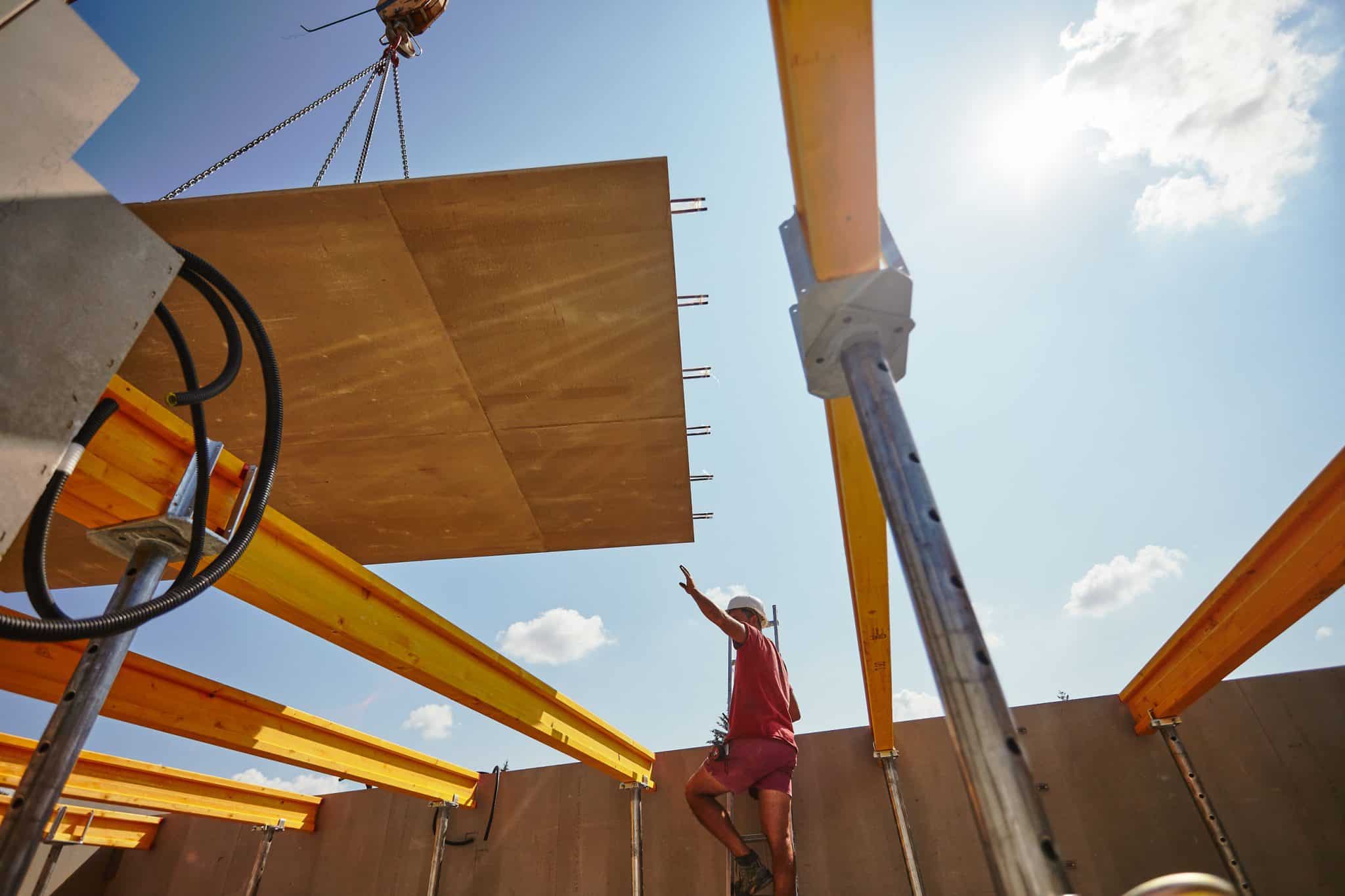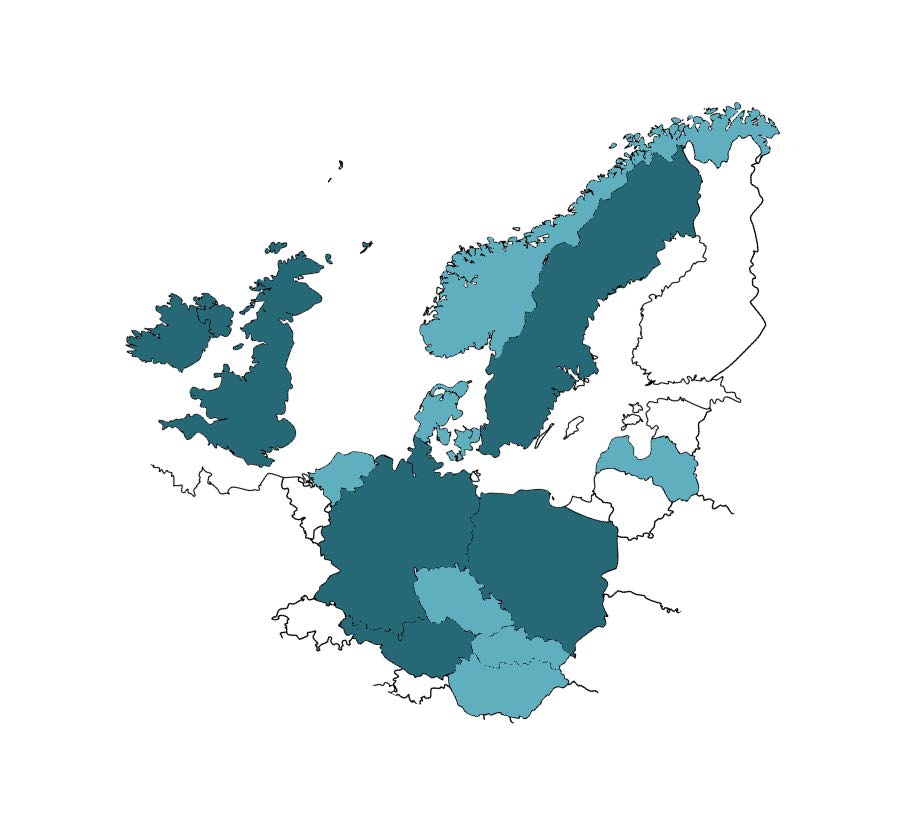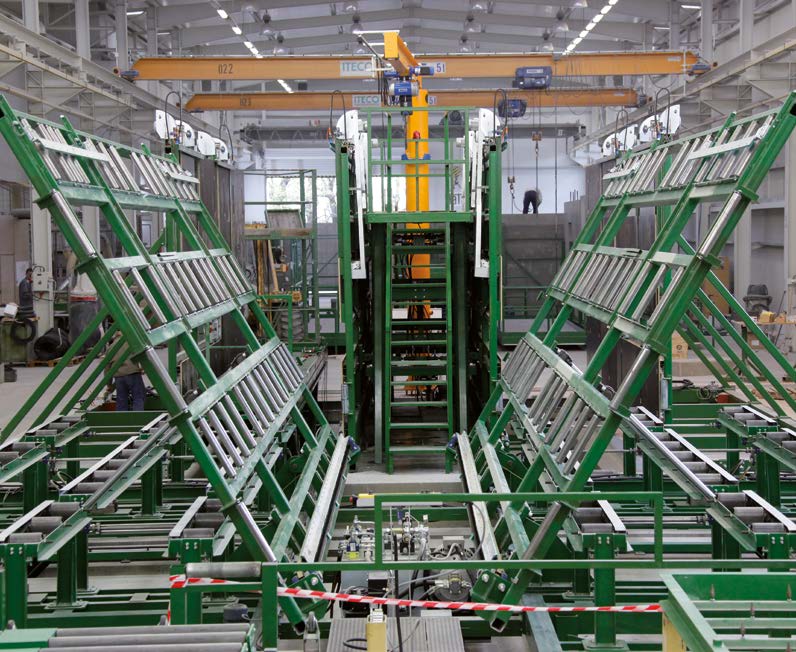Industrially prefabricated VST elements are designed individually according to individual customer requirements. During the entire process of industrial prefabrication, the highest precision is guaranteed. On the construction site, work is minimized to the assembly and concreting of elements. After this process, the concrete core is permanently bonded to the cement chipboards.
Innovative elements of VST (in translation: composite formwork technology) are made of cement-chipboards with a thickness of 24 mm, which by weight consist of 70% cement and 30% wood particles.

VST construction components meet the highest quality requirements, are significantly lighter than conventional concrete elements and are characterized by simple and quick assembly. A high degree of prefabrication reduces construction time without limiting the customer's freedom of design. The patented VST composite formwork system is suitable for all load-bearing and non-load-bearing structures. Depending on the requirements, building elements such as walls (vertical or inclined), slabs (horizontal or inclined), columns, beams, formwork, stairs and special elements can be produced.
The first automated production line of VST BUILDING TECHNOLOGIES AG was opened in Nitra, Slovakia, in the autumn of 2013. It is the most modern and largest factory - with an area of almost 17,000 square metres - for the production of building components such as walls and slabs in Europe.
At the VST production factory in Nitra, we manufacture the patented VST composite formwork system for "off-site construction" according to individual customer designs. The automation of the production line represents a technological breakthrough in the industrialisation of component production, as it makes the entire production process much more efficient and cost-effective. On the one hand, the use of raw materials in production is reduced and, on the other hand, the need for labour is reduced. Automation has also significantly increased the overall production capacity of the Nitra factory.


The first automated production line of VST BUILDING TECHNOLOGIES AG was opened in Nitra, Slovakia, in the autumn of 2013. It is the most modern and largest factory - with an area of almost 17,000 square metres - for the production of building components such as walls and slabs in Europe.
At the VST production factory in Nitra, we manufacture the patented VST composite formwork system for "off-site construction" according to individual customer designs. The automation of the production line represents a technological breakthrough in the industrialisation of component production, as it makes the entire production process much more efficient and cost-effective. On the one hand, the use of raw materials in production is reduced and, on the other hand, the need for labour is reduced. Automation has also significantly increased the overall production capacity of the Nitra factory.
If you are interested in VST technology or have additional questions, do not hesitate to contact us. Just fill out and submit the form below and our sales representative will contact you.